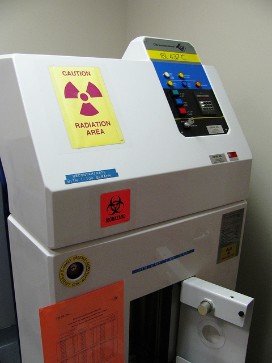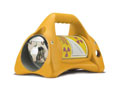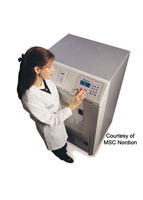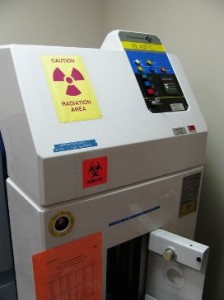
Securing Radiological Materials: Diffusing the Threat of Homegrown Terrorism
Yesterday the US Senate Committee on Homeland Security held a hearing along with representatives from the National Nuclear Security Administration (NNSC), the US Nuclear Regulatory Commission (NRC), the Department of Homeland Security (DHS), and the US Government Accountability Office (GAO) to address the security of radiological materials in the United States. The hearing began with the committee’s Chairman Tom Carper (D-Del.) describing the Boston Marathon bombings and the consequences that would’ve resulted had the adversaries used dirty bombs instead of pressure-cooker bombs. He described a dirty bomb as:
“…Any kind of crude explosive device that, when detonated, disperses radiation around and beyond the blast. If a dirty bomb successfully goes off, those who survive the blast can be exposed to harmful amounts of radiation that could cause sickness or even death. Moreover, a dirty bomb could render areas uninhabitable for many years, making it a highly disruptive weapon.”
Senator Carper warned that in order to successfully prevent something like this from occurring, counterterrorism efforts should remain several steps ahead of terrorists and aim to anticipate and defuse terrorist plots before they are even conceived. He cited an alarming case in point by referring to four instances from 2006 to 2012 in which radiological material was stolen, in addition to two cases in which individuals with criminal histories were given unsupervised access to potential dirty bomb material. One of these individuals was even convicted of making “terroristic threats.”
Several photos were shown during the hearing, taken by the GAO. The first was a photo of a radiography camera, commonly used on construction sites, containing iridium-92, a category-2 source which, when improperly exposed to for an hour to two hours, could cause serious injury. It would take material from only one of these radiography cameras to build a dirty bomb. The next photo was of a warehouse that stores these radiography cameras, with the door left unattended and wide-open. Since the cameras were in a locked container with a padlock, they still met NRC requirements (even though padlocks can easily be broken.) The following photo was of the container inside the warehouse, where the materials were locked behind a gate, however the door of the gate and the surrounding walls didn’t go all the way to the ceiling. Lastly, a photo of an unsecured skylight was shown in the warehouse, which would provide another entrance other than the main one by which someone could potentially enter through to illicitly obtain the materials.
Another disconcerting issue that the GAO brought-up was the fact that commercial licensees have full discretion as to who they hire to be a part of their staff. This means that there would be no ramifications if a licensee provided an individual with unescorted access to material, no matter their background. In addition to this, some category-1 and category-2 sources are only inspected by the NRC every three to four years. A category-1 source refers to any radiological material that if improperly exposed to, within minutes, could result in serious injury or death. The truck full of Cobalt-60 which was stolen in Hueypoxtla, Mexico in December of last year was full of category-1 material.
Why does all of this matter? Because the easiest way a homegrown terrorist could obtain nuclear material would be through domestic means. Cargo is scanned at sea ports with detection equipment, along with aviation and coast guard detection, making it more difficult for an individual to illicitly import nuclear material from outside the country. This would give terrorists all the more reason to try and obtain this material on the home front, especially if it’s not properly secured.
What has been done thus far to secure radiological material in the US?
- Inspection of sites every year to four years
- Revocation of licenses if commercial business don’t meet requirements
- Background checks of licensees
- Readily-available best practices documents
- Liaison with local law enforcement to plan if material becomes stolen
- Exercises with enforcement officials who would be involved in theft incidents
- Research for safer alternatives to radiological materials in construction and medical facilities
- Triad of intelligence, law enforcement, and technology to detect stolen material
What can be improved to enhance the security of radiological material in the US:
- Increase coordination among law enforcement officials and the federal government
- Track shipments of mobile radiological materials in the US
- Increase the frequency of inspections for radiological sources
- Require background checks for all individuals with access to radiological materials
- Provide more guidance to commercial businesses in securing radiological material
ASP believes that the US should bolster proven, effective programs for combating the spread of nuclear material by increasing oversight, enhancing prevention mechanisms, and bettering coordination among local and federal officials in response to incidents. Nuclear material falling into the hands of a non-state actor poses a dangerous threat to the security of our nation; therefore steps should continually be taken to diminish these threats. For further reading, please see ASP’s The 21st Century Nuclear Arsenal. You can also see the full GAO report here: Additional Actions Needed to Increase the Security of US Industrial Radiological Sources.
Theresa Shaffer is a nuclear security researcher and intern at the American Security Project. She is a recent graduate of the University of North Texas with degrees in International Studies and French. You can follow her on twitter here: Theresa Shaffer









[…] Securing Radiological Materials: Diffusing the Threat of Homegrown Terrorism […]